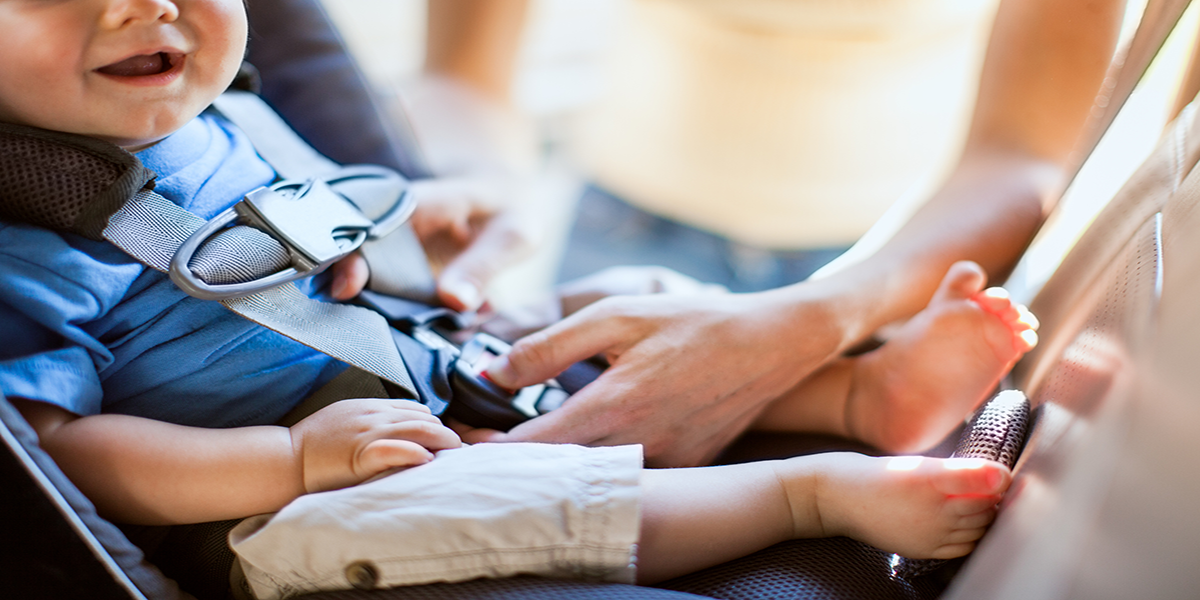
NURSING DIVISION
HOCKING COUNTY HEALTH DEPARTMENT
CAR SEAT PROGRAM
The Hocking County Health Department is the local distribution site for the Ohio Buckles Buckeyes Child Safety Seat Program. The Ohio Buckles Buckeyes program is made possible through the purchase of child safety seats by the Ohio Department of Health. The Health Department has a Certified Child Passenger Safety Technician to facilitate the program. The technician is available to assist with child safety seat questions and to check the installation of the seat for the safety of your child.
PROGRAM ELIGIBILITY
A parent or guardian is eligible to receive a child restraint system-convertible or booster seat if they are a WIC client or meet current WIC Income Guidelines. The parent or guardian must contact the car seat technician at the health department.An educational session on proper use and installation of the child safety seat will be necessary. The educational training reviews proper installation and use of child restraints, as well as car seat laws in Ohio.
HOW CAN I GET A CAR SEAT OR BOOSTER SEAT?
Call Emily Norris, RN, BSN, Certified Child Passenger Safety Technician
@ 740-385-3030 Ext: 236
DO YOU NEED HELP INSTALLING YOUR CAR SEAT?
An approximate four out of five car seats are not used correctly. Don’t let your child’s be one of them! We can help you install your car seat correctly in your vehicle. Through car seat checks, Certified Child Passenger Safety Technicians are able to help parents learn to use their car seat so that their child is properly protected. These specially trained technicians also provide parents with the most reliable up-to-date safety information available regarding car seats, including recall information and proper seat use. It is important that parents direct their questions about car seats to a Certified Car Seat Technician; salespeople or even police officers may not have current information about car seat safety.Stop in or call ahead for an appointment.
HOW CAN I FIND OUT IF MY CAR SEAT HAS BEEN RECALLED?
To find out if your car seat has been recalled, please visit the Child Safety Seat Recalls Web Page on the National Highway Traffic Safety Administration website at www.nhtsa.dot.gov.WHAT ARE THE FIVE MOST COMMON MISTAKES PARENTS OR CAREGIVERS MAKE WHEN INSTALLING A CAR SEAT?
THE CAR SEAT IS INSTALLED TOO LOOSELY IN THE VEHICLE.
Your car seat should not move more than one inch side to side or forward. This is the number one mistake that parents and caregivers make.
The Danger: In a collision, a child in a loose seat could crash into the back of the front seat and seriously injure their face or head.
Fast Fix: Place your knee in the seat, and put all your weight into it (use your arm for an infant seat), tightening the seat belt as much as possible. Then lock the seat belt, a step that many parents miss. If you have a pre-1996 car, it may not have adequate belt-locking capabilities. You need to use a locking clip. Most safety seats come with one. Don’t forget to engage your car’s seat belt lock. Shoulder-belt locks work differently than lap belt locks, so check your car manual for instructions.
THE CAR SEAT IS TURNED FORWARD FACING TOO SOON.
For best protection, infants and toddlers should be in safety seats facing the back of the car until 2 years of age, or until reaching the maximum height or weight of their convertible car seat.Infants must not face forward until they are at least 1 year old and weigh at least 20 pounds.
The Danger: the bones that protect an infant’s spinal cord are still forming. When a child is rear facing, his/her back (the strongest part of their body) can better absorb the immense forces of a crash. Facing forward, an infant’s relatively heavy head can catapult forward. This may cause his/her underdeveloped spine to expose the spinal cord, putting him/her at risk of paralysis or death.
Fast Fix: Follow the rules. Keep
you baby rear facing until at least one year of age and at least 20 pounds. Go the “extra mile” and keep your child rear facing until he/she reaches the upper weight limit of the safety seat and is at least one year of age.
THE HARNESS IS LOOSE AND THE RETAINER CLIP IS NOT CORRECTLY POSITIONED ON THE CHILD.
The harness should be snug on the child’s shoulders and the retainer clip should always be positioned at armpit level.
Test your seat: If, after you’ve tightened your child into his/her car seat, you can still pinch the fabric of the harness straps between your fingers the harness is too loose.
The Danger: A child who has a loose harness can easily come out of the safety seat in a crash; the child could then be severely injured if they hit part of the car’s interior or another passenger. The worst case scenario, the child could be ejected from the vehicle. When the retainer clip is in the wrong position, the straps can easily slip off the child’s shoulder and put the child at risk of being ejected from the seat during an accident.
Fast Fix: Tighten the harness. Keep in mind that the straps should be snug and have no slack. Parents often move the retainer clip as they maneuver their child out of the seat. Check the clip’s position every time you buckle up.
THE HARNESS STRAPS ARE NOT PROPERLY THREADED OR ADJUSTED.
Harness straps should be at or below the child’s shoulder when using a car seat rear facing. When using a car seat in the forward facing position, harness straps should be at or just above the shoulders, usually the top slots, unless manufacturer’s instructions say differently.
The Danger: when the child faces forward, a harness in the lower slots can break through the seat during a collision.
Fast Fix: always check the instructions that came with your seat to find out which slots are for which direction. If in doubt, call the manufacturer of the child safety seat. (The 1-800 # should be on the side of your child’s seat)
THE CHILD IS NOT IN A BOOSTER SEAT LONG ENOUGH OR NOT IN ONE AT ALL.
A booster seat boosts the child up so the seat belt fits the child correctly…low over the hips and upper thighs and snug over the shoulder.
Once a child reaches 4 years of age and weighs at least 40 pounds, she can move to a booster seat.A child is required by law to use the booster seat until she is 8 years old or 4’9” tall.Both backless and high back booster seats are available. Check the manufacturer’s instructions to see which is best for your child.
**No child under 13 years old should ever sit in the front seat!
CLINICS / INFORMATION
Emergency Response Plan
ADDRESS
HC Health Department
350 St. Rt. 664N (map)
Logan, Ohio
OFFICE HOURS
Monday-Friday: 8am-4pm
PHONE: 740-385-3030
EMAIL
ADDRESS
HC Health Department
350 St. Rt. 664N (map)
Logan, Ohio
OFFICE HOURS
Monday-Friday: 8am-4pm
PHONE: 740-385-3030


